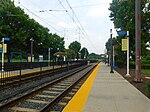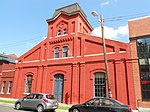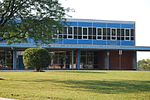Mount Auburn Cemetery (Baltimore, Maryland)
1872 establishments in MarylandAfrican-American cemeteries in MarylandAfrican-American history in BaltimoreBaltimore City LandmarksCemeteries established in the 1870s ... and 5 more
Cemeteries in BaltimoreCemeteries on the National Register of Historic Places in MarylandHistoric districts on the National Register of Historic Places in BaltimoreNRHP infobox with nocatWestport, Baltimore

Mount Auburn Cemetery is a historic African American cemetery and national historic district in Baltimore, Maryland, United States. Overlooking the Middle Branch of the Patapsco River to the east, Baltimore's Downtown to the north and railroad tracks to the south, Mt. Auburn Cemetery is surrounded by the Cherry Hill, Westport, Mt. Winans and Lakeland communities.
Excerpt from the Wikipedia article Mount Auburn Cemetery (Baltimore, Maryland) (License: CC BY-SA 3.0, Authors, Images).Mount Auburn Cemetery (Baltimore, Maryland)
Waterview Avenue, Baltimore
Geographical coordinates (GPS) Address Nearby Places Show on map
Geographical coordinates (GPS)
| Latitude | Longitude |
|---|---|
| N 39.259444444444 ° | E -76.639722222222 ° |
Address
Waterview Avenue
Waterview Avenue
21230 Baltimore
Maryland, United States
Open on Google Maps










